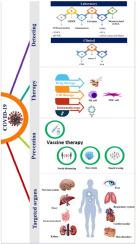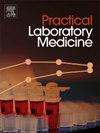Comprehensive and translational pathobiology of COVID-19 based on cellular and molecular techniques
IF 1.3
Q3 MEDICAL LABORATORY TECHNOLOGY
引用次数: 0
Abstract
The biggest health issue in the world right now is the COVID-19 pandemic. This outbreak has caused a lot more people to be hospitalized for pneumonia and serious health problems, leading to many deaths. This report talks about many studies that showed the causes and how common COVID-19 is, as well as how to diagnose it in clinics and labs, and how to prevent and control it. These studies are very important and directly related to COVID-19 to help manage the current public emergency. Many parts of this dangerous disease, like how it spreads, how to diagnose it, how it infects people, and how to treat it, are still not well understood. It's important that to prevent, diagnose, and treat COVID-19 well, we need research at the molecular and clinical levels, along with public health measures and medical treatments. Clearly, new treatments like mesenchymal stem cell therapy have shown great promise in this area. Here, we will talk about and show the advanced lab methods used to understand how COVID-19 spreads, how it is diagnosed, and how it can be treated.

基于细胞和分子技术的COVID-19综合和转化病理生物学
目前世界上最大的健康问题是COVID-19大流行。这次疫情爆发导致更多的人因肺炎和严重的健康问题住院,导致许多人死亡。本报告讨论了许多研究,这些研究显示了COVID-19的原因和常见程度,以及如何在诊所和实验室诊断它,以及如何预防和控制它。这些研究对帮助管理当前的突发公共事件非常重要,并与COVID-19直接相关。这种危险疾病的许多方面,如它如何传播、如何诊断、如何感染人以及如何治疗,仍然没有得到很好的了解。重要的是,为了预防、诊断和治疗COVID-19,我们需要在分子和临床层面进行研究,以及公共卫生措施和医学治疗。显然,像间充质干细胞疗法这样的新疗法在这一领域显示出巨大的希望。在这里,我们将讨论并展示用于了解COVID-19如何传播,如何诊断以及如何治疗的先进实验室方法。
本文章由计算机程序翻译,如有差异,请以英文原文为准。
求助全文
约1分钟内获得全文
求助全文
来源期刊

Practical Laboratory Medicine
Health Professions-Radiological and Ultrasound Technology
CiteScore
3.50
自引率
0.00%
发文量
40
审稿时长
7 weeks
期刊介绍:
Practical Laboratory Medicine is a high-quality, peer-reviewed, international open-access journal publishing original research, new methods and critical evaluations, case reports and short papers in the fields of clinical chemistry and laboratory medicine. The objective of the journal is to provide practical information of immediate relevance to workers in clinical laboratories. The primary scope of the journal covers clinical chemistry, hematology, molecular biology and genetics relevant to laboratory medicine, microbiology, immunology, therapeutic drug monitoring and toxicology, laboratory management and informatics. We welcome papers which describe critical evaluations of biomarkers and their role in the diagnosis and treatment of clinically significant disease, validation of commercial and in-house IVD methods, method comparisons, interference reports, the development of new reagents and reference materials, reference range studies and regulatory compliance reports. Manuscripts describing the development of new methods applicable to laboratory medicine (including point-of-care testing) are particularly encouraged, even if preliminary or small scale.
 求助内容:
求助内容: 应助结果提醒方式:
应助结果提醒方式:


